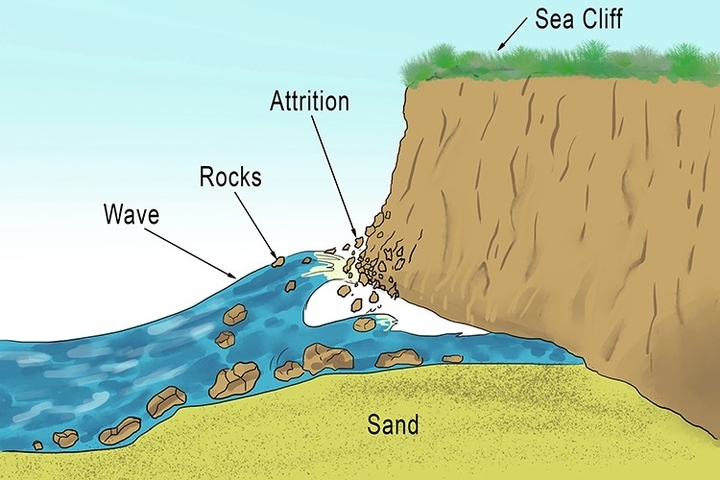
Attrition is one of the key processes that shapes the coastal landscape. It is a process of erosion that occurs when rocks and pebbles carried by waves smash into each other, and against the seabed and the base of a cliff or rocky outcrop. Through this action, the rocks and pebbles are worn away, becoming smaller, rounder and smoother .
The process of attrition is caused by the force of the waves, which get their energy from the wind. The size of the wave is determined by the speed of the wind, the length of time the wind has been blowing, and the distance of sea it has travelled over (the fetch). The stronger the wave, the more erosion it will cause .
There are four main processes of coastal erosion: corrasion, abrasion, hydraulic action, and attrition. Corrasion is when destructive waves pick up beach material (e.g. pebbles) and hurl them at the base of a cliff. Abrasion, also called corrasion, is the process of rocks and pebbles carried by the waves wearing away rocks as they are thrown against cliffs. Hydraulic action is the sheer force of waves crashing against the shore and cliffs. Finally, attrition happens when rocks and pebbles carried by the waves smash into each other, wearing each other away and gradually becoming smaller, rounder and smoother .
Coastal landscapes are formed by a combination of erosion, transportation, and deposition processes. They each have distinctive features which can be identified on an OS map. For Higher Geography study the formation of erosion and depositional features in coastal landscapes and identify features on an OS map .
